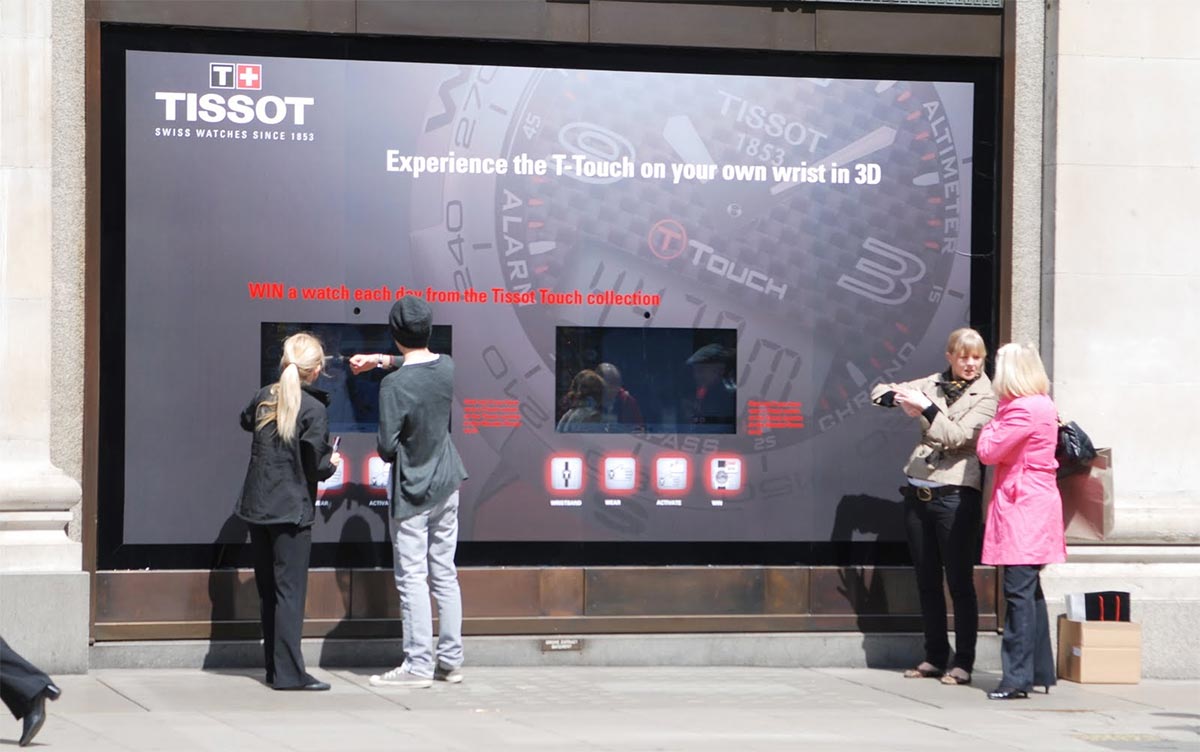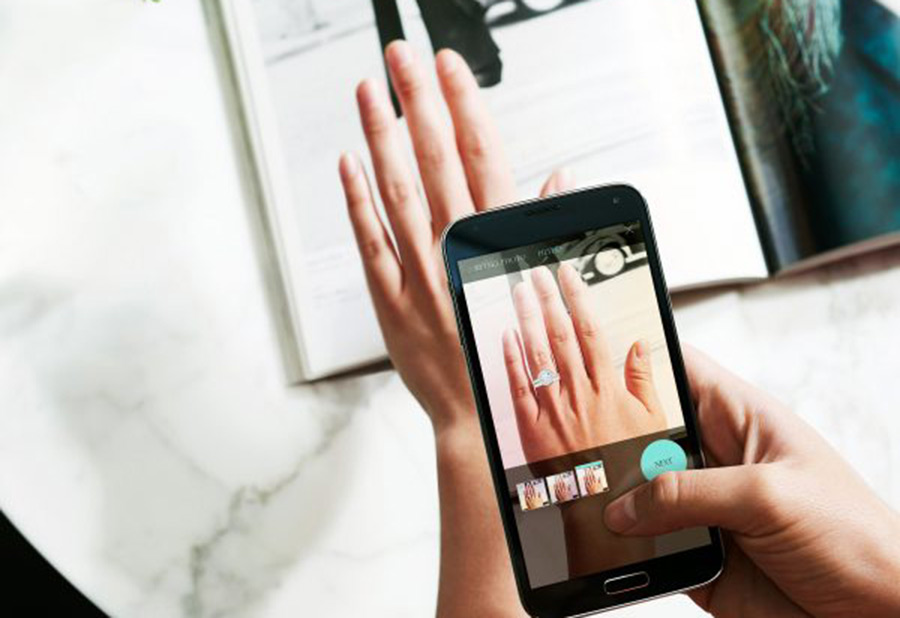During the recent years, the augmented reality technology has been taking over in different areas of business, most firmly in retail and e-commerce. With a new generation of consumers (i.e millennials), new approaches in sales are vital to keeping your business in step with time. Exclusive brands like De Beers, Forevermark, Tacori and Boucheron have already implemented augmented reality in jewelry and have begun reaping the benefits. Augmented reality is already reshaping the classic retail, making it more fascinating and engaging.
Why use augmented reality in jewelry?
- Marketing
Every advertising campaign using augmented reality objects will bring top-notch experiences to customers, as well as the deeper knowledge of the product. Thus, a better brand awareness. One of the oldest types of advertising in the jewelry industry is publishing product catalogs. In this regard, a marker-based augmented reality app for smartphone owners can turn every items of catalogs into 3D animated models.
In jewelry, it’s all about presentation and showcases. With AR you can create showcases, limited only by your fantasy and budget, displaying jewelry items through the shopping glass along with extra information (size, weight, 4Cs, etc.). People only have to point their phones/mobile devices onto the showcases.
Let's Build Your AR app
Provide us with your contact details and we will contact you today
Thank you for feedback.
Another use are shop windows. Everyone stares at shop windows and gets attracted from time to time. Interactive store entrances catch people’s eye. For example, Swiss watchmaker Tissot made it possible to try on the 3D model of their product right in front of the shop. And it boosted not only the interest but the sales: Tissot Selfridges boutique had an 85% increase in sales as the result of this campaign.

- Enhancing customer experiences
One of the great features of the XXI century is that retail has moved from the streets to mobile devices. Most people practically stopped buying things in the shops, instead of shopping online. And the biggest barrier for jewelry e-stores is the inability to try products on. Customers usually struggle to visualize items, that are two-dimensional. Browsing rings, necklaces, and other jewelry cannot give a real sense of size, looks, and details, and moreover often leaves a wrong idea about a product.
Augmented reality and AR apps can solve this. The scheme “try before buy” is a great fit for online shopping if paired with AR. Selling jewelry is about invoking desire and need, and nothing drives it like trying on jewelry. Augmented reality apps offer a chance to do it virtually at home or anywhere else.

In-store selling also can be changed with help of AR. Mirrors, screens, dressing rooms – one can use it all with AR to impress and attract shoppers. Jewelry AR apps also allow user data collection which then can be used to personalize sale offers or adjust the marketing strategy. One final thing is that AR drives interest to interact with a product, allow people to try 10 different rings on themselves and you’ll notice the change.
- Business efficiency
With the ever-growing number of smartphones users, meaning potential clients, and 24/7 access almost everywhere, you can’t ditch such a business opportunity. Many physical stores struggle to stay in the game due to high rent, while online merchants don’t have to worry about that.

Find AR/VR developers
Post your project or request a dedicated team - we'll quickly match you with the right experts
E-commerce also aids in cutting advertising costs. Apps can reach much wider audiences than conventional ads on billboards, TV, radio, etc. We’re not telling those methods are outdated, just mentioning a better option. And lastly, augmented reality boosts sales, that is evident. Apps are a common thing and AR attract interest, as simple as that. Purchases are just a few clicks away.
AR jewelry apps
To show what you can achieve with augmented reality in jewelry, let’s list some AR apps that are already on the market. As a rule, such apps are of 2 types: projecting 3D objects (markerless) and marker-based apps demonstrating AR elements.
This app is available in the App Store for iPhone/iPad and offers a wide range of engagement and wedding rings. It uses hand recognition to scan the hand and with AR virtually puts a ring on it. Users can move the ring to any other finger only by pressing on it. Another useful feature is the ability to share the final look of the hand with a ring on Instagram, Facebook, Pinterest or via e-mail.
The app helps to browse, choose and try on jewelry. Shop4Rings includes the selection of over 300 rings featured in Amazon and Kobelli edition, with full description, size and price range for all items in the app. It comes with a unique ‘Try On’ function utilizing hand scanning AR tech. Other features are ring-sizes for different countries, swiping, wish list, and social sharing. Available for iPad/iPhone.
CaratLane
The app offers to discover up to 1000 of jewelry pieces, including rings, earrings, pendants, necklaces, bangles and more. Key features are catalog browsing, image zooming, wishlist and try on a function of course. Users can shop via a mobile app with over 3000 items of diamond, gemstone, gold, platinum or solitaire. And they save to 25% compared to a physical store by doing so! Seems like a great incentive.
How to sell jewelry with AR
One of the best and practical examples of augmented reality in jewelry are showcase units. Check out the Holojem platform, allowing customers to view the items up close as never before. Stores and stands at trade shows may feature such units with AR features, showcasing jewelry in the best possible way. This is a cutting-edge, revenue-boosting, 3-dimensional and highly-compelling option.
Other solutions may include:
- AR mobile apps for e-commerce
- Product catalogs with AR
- Print and product augmentation
- Virtual touch and try-on platforms
- Beacons for “near me” stores or coupons/offers
- Image recognition for digital objects
Finally, various studies show, that most buyers would like to use augmented reality in retail, and 55% state AR helps to make a right purchase. Besides offering new experiences to customers with AR jewelry apps, you would also most probably distinguish your business from competitors.
With e-commerce taking over conventional retail and consumers spending much time on mobile devices, augmented reality is worth investing. The jewelry industry is also keeping up with trends, going mobile and starting looking at AR. And as we see, AR apps and tools showing objects as 3D models are sure to encourage customers to buy.
Let's Build Your AR app
Provide us with your contact details and we will contact you today
Thank you for feedback.
Read more: 20 best AVR development companies


